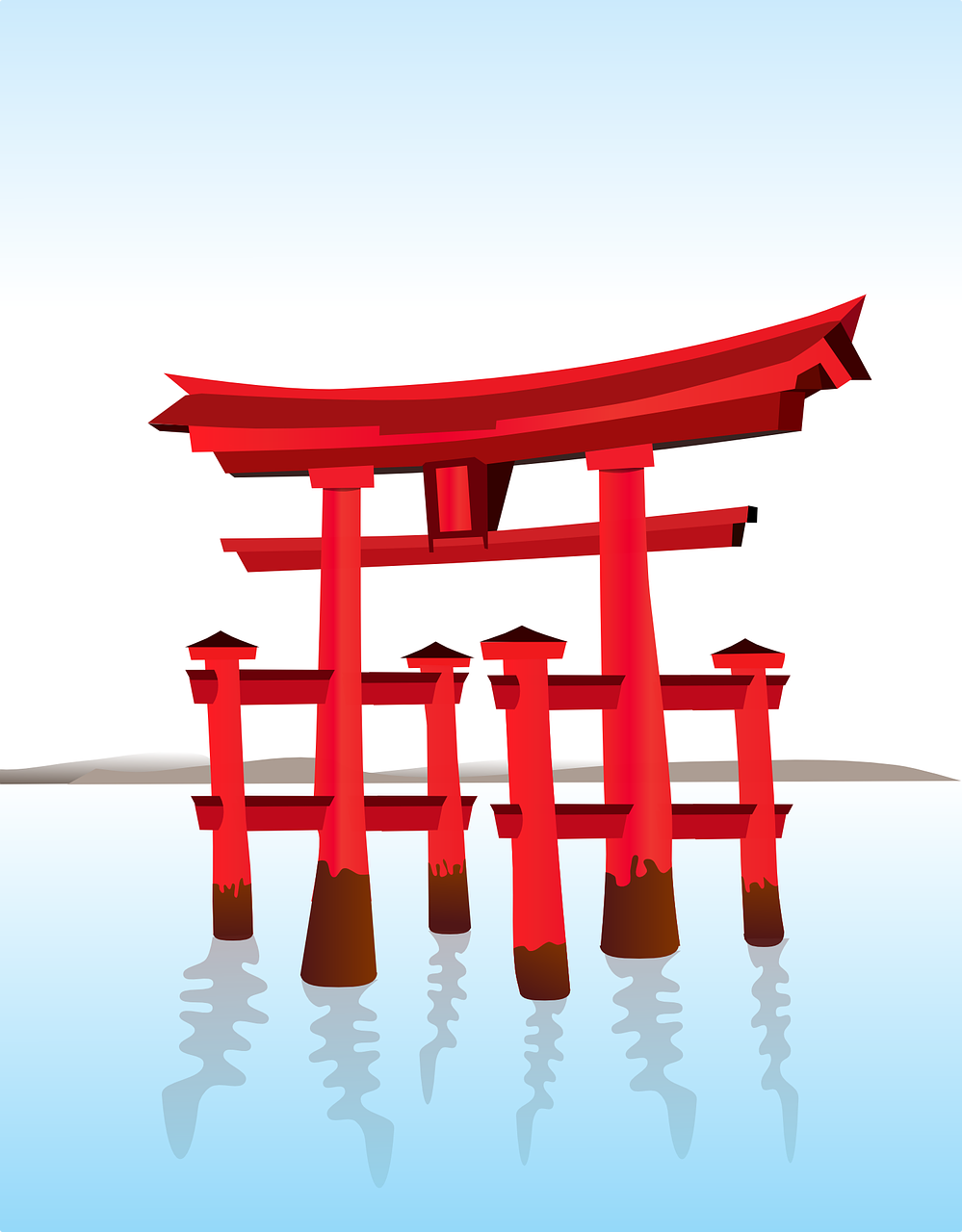 Submitted by Miyagi on
Submitted by Miyagi on

pixabay.com
Creation of Heaven and Earth
Heaven and Earth were combined into a substance. It began to separate and the pure, clear element rose out forming heaven. The denser impure substance sank to become earth. Heaven formed easily so it was completed first but Earth evolved with a little more trouble and therefore took longer.
Creation of the Kami
Once heaven and Earth were formed, the deities of Shinto were created. A reed sprouted from the newly created Earth, emerging into the god Kuni-toko-tachi no Mikoto. Next evolved seven more generations of deities both male and female. These gods are Kuni no sa-tsuchi no Mikoto, Toyo-kumu-nu no Mikoto, Uhiji-ni no Mikoto, Suhiji-ni no Mikoto, Oho-to nochi, Oho-to mahe no Mikoto, and finally Izanagi no Mikoto and Izanami no Mikoto
Creation of Land Masses
Once created, Izanagi no Mikoto and Izanami no Mikoto discussed the lack of creation on Earth. To fix the situation they threw their heavenly spear into the ocean. As the spear touched the ocean, an island named Ono-goro-jima emerged. When translated, this means center of the land. The two Kami descended to Earth and lived together on this island. By uniting as husband and wife, Izanagi no Mikoto and Izanami no Mikoto created more islands. They created the islands of Ahaji no Shima, Oho-yamato no Toyo-aki-tsu-shima, Iyo no futa-na, Tsukushi, Oki and Sado, Oho-ya-shima, and Tsushima and Iki. Together these islands formed a country. Izanagi no Mikoto and Izanami no Mikoto then joined together to create the sea, rivers, and mountains.
Creation of the deities
In addition to natural structures, Izanagi no Mikoto & Izanami no Mikoto produced other deities. The firstborn was Ku-ku-no-chi, the ancestor of trees, followed by Kaya no hime, ancestor of herbs. The parent deities then formed Amaterasu, the sun goddess. Although this goddess resided in Heaven, she was the ultimate ruler of Earth. The importance of the sun goddess is clear in Japans title Land of the Rising Sun. Next, the two Kami gave birth to Ebisu who by the age of three was still unable to stand. As a result, they set this child adrift in a wooden boat of Heaven. Izanagi no Mikoto and Izanami no Mikoto went on to create Tsuki-yumi no Mikoto, the moon god. Finally, Soso no wo no Mikoto was formed. Unlike the other deities, this god was cruel and so he was exiled to the land below. Overall, the many deities were connected to some aspect of nature, be it the sun, plants or creatures. The Kami served as protectors of various families and lands. The original emperors were considered gods.

KAMI (SUPERNATURAL BELIEFS)
In Shinto it is taught that everything contains a Kami. Kami is like spiritual essence. It can be translated to mean god or spirit. Shinto’s spirits are called ‘yaoyorozu no kami’ which means eight million kami, but this is interpreted as ‘myriad’ (a large quantity), although it can also be translated as ‘many kami.’ Kami is generally accepted to mean ‘supernatural forces above the actions of man’ and it represents gods, spirit figures and human ancestors. Kami is everywhere but some places are designated for humans to connect with Kami. These places are sacred nature, shrines, and kamidanan (home shrines). Natural places are considered to have more Kami than others. They are frequently mountains, trees, rocks, rivers and waterfalls. Shrines are houses for Kami and Kamidanan are small house shrines placed on a wall in the home.
ATFERLIFE (SUPERNATURAL BELIEFS)
Since Shinto and Buddhism are both commonly practiced by most Japanese people and have been for over a millennium it is very hard to untie the differences in the religions when it comes to the afterlife. The Japanese seem to have no trouble practicing traditions from both of these religions. It is common for Japanese people to practice Shinto in life and yet have a Buddhist funeral. The Shinto view of the afterlife is very ambiguous so normally anything to do with death gets turned overs to Buddhism.
SHINTO SYMBOLISM (SYMBOLISM OF REIGION)
There are many Shinto symbols. Among these is the torii gate which is found at the entrance to a Shinto shrine, it symbolizes the entrance from the normal world to the sacred. There is a sword and a mirror which are both from the myth of Amaterasu and a pair of foxes seen at the entrance to shrines for the deity Inari. Symbols placed on Shinto shrines are usually covered or hidden.
- 1430 reads